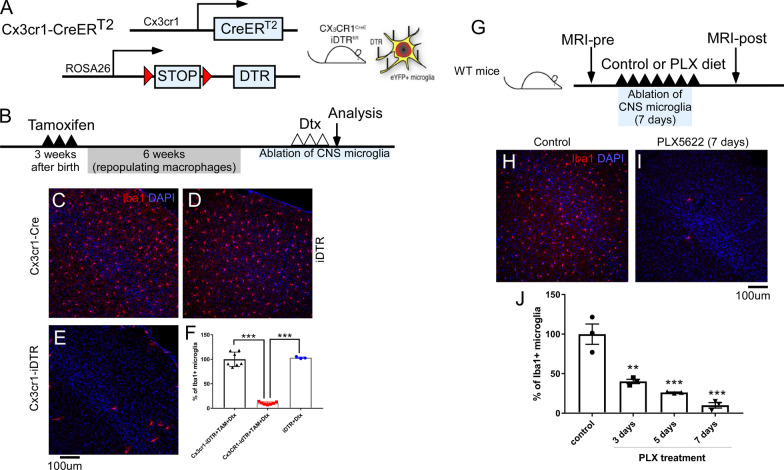Fig. 1.
Genetic (Cx3cr1-iDTR) and pharmacological (PLX5622) model of microglia ablation leads to efficient microglia ablation. A Generation of genetic microglia ablation model in Cx3cr1-iDTR mice. B Experimental timeline for genetic CNS specific microglia ablation. C Quantification of microglial cell numbers in control (Cx3cr1-Cre n = 7 or iDTR n = 3) or microglia ablation mice (Cx3cr1-iDTR n = 7, p < 0.001, One-way ANOVA). D representative images of microglia cell (IBA1-immunostaining) in control and ablated mice. F Experimental timeline for PLX5622 mediated microglia ablation. G, H representative images of microglia cell (IBA1-immunostaining) in control and PLX5622-ablated mice. I Quantification of microglial cell numbers in control (control diet for 7 days, n = 3) or mice that were subjected to PLX5622 for different days (n = 3 for each time points, Mean ± SEM, ** or *** indicates < 0.01 or p < 0.001 compared to control, one-way ANOVA). Quantification result is from one cohort of mice with similar results observed from > 2 other independent experiments

